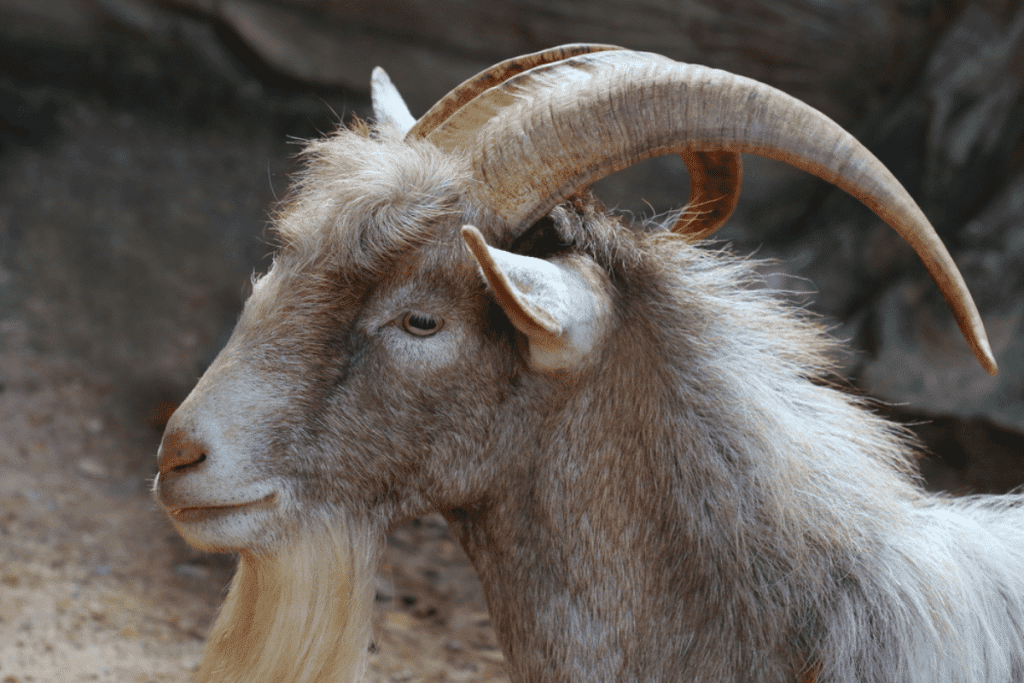Goat castration, otherwise known as wethering, is common among goat owners.
Wethering is a process, if not done correctly, can cause unnecessary pain and suffering for your goat.
But you also need to castrate a goat at the right age.
Although a male goat, known as a “buck,” may be neutered at any time of their lifecycle, most people consider the ideal time to wether their bucks between 10-12 weeks of age to make the procedure as easy as possible on the animal.
There exist several methods of wethering bucks; each comes with its challenges and considerations.
In addition to properly wethering your buck, you want to understand these methods and their various ramifications.
Read ahead for more details about weathering and castration in your goats.

Table of Contents
ToggleThe Purpose Of Wethering Goats
The primary reason people wether their goats is to avoid inbreeding.
If a buck remains intact, he needs to be kept separate from the rest of the herd.
Also, a buck becomes more aggressive as he gets older and enjoys head butting whoever is nearby.
It is simply the result of testicular development pushing hormones into the body.
Wethering reduces testosterone levels and makes bucks easy-going.
Finally, bucks are stinky creatures.
Their normal musk scent isn’t bad.
It is simply a production of sex hormones.
But they will urinate on themselves in rutting season, and the stench becomes insufferable.
Think of it as the buck splashing on cologne before a hot date.
There are several common methods of castration, of which the safest method is the most traditional.
Methods Of Goat Castration: Three Primary Techniques
Three methods of the actual castration procedure are as follows:
Banding: This method uses rubber bands placed above the goat’s testicles using elastrator pliers specially designed for the job.
It is common in the United States but is mired in controversy elsewhere.
Europe has outlawed the practice as inhumane.
Burdizzo, or Castration Pliers: This is another specialized tool used to sever and crush the spermatic cord and the blood vessels which feed the testicles.
Knife: This traditional method uses a sharp, sterile knife and a steady hand.
The technique is to grab the lower third of the scrotum, push the testicles up, then slice the lower scrotum, and reach in and manually extract the testes.
The Banding and Burizzo methods work as they restrict blood flow to the testicles, known as bloodless castration.
All require the proper position of the tool for success.
Further, each technique for castration, avoiding injuring the urinary tract, is critical.
Related: Why are goat testicles so large?
Pros and Cons of Each Technique
Banding
Banding Pros:
- Applying the elastic bands is relatively easy to do
- Inexpensive
- No blood loss
Banding Cons:
- Considered inhumane
- Errors carry the risk of tetanus and urinary calculi
- Requires specialized tools and bands
Burdizzo
Burdizzo Pros:
- No blood involved
- Very low risk of infection
- More humane than banding
Burdizzo Cons:
- Error carries the risk of tetanus and urinary calculi
- Requires a specialized tool
Cutting
Cutting Pros:
- Traditional method
- Reliable
- Inexpensive
Cutting Cons:
- Sterile surroundings are a must
- Heightened risk of infection due to bacterial growth at the site
Does Wethering Goats Hurt?
Of course, when it comes to any one of these methods, castration will hurt.
Aside from surgical castration, where anesthesia may be used, there is no getting around the fact acute pain may ensue.
If you have performed late castration, anything over 10 – 20 months, there may be acute, short-term pain, and you may want to have pain medications available.
What to Expect When Wethering
Your goat should be back to normal several days after castration.
If you notice weight loss, check for bacterial growth at the site.
Also, look for signs of urinary calculi.
Abnormal positions for a goat, such as laying on its side, indicate sick animals.
After banding or burdizzo, the scrotum should naturally detach from the body within two months.
The testicles will become hard and shrink in a proper banding, as will the scrotum until flat and leathery.
It is important to check from time to time to ensure the process is working as expected.
How Early Can You Band A Goat?
The typical timeframe for early banding is 10 weeks, with some goat owners stretching it to 8 weeks.
Don’t castrate or band your goat before this point, or you may end up causing potentially deadly health issues.
When you band early, you impact the urethra and prevent it from developing fully.
If the urethra is stunted, the poor goat will be battling painful and dangerous urinary stones for the rest of its life.
Be patient if possible and make the appointment (or set the date if you do them yourself) as soon as you get the goat.
It’s better to wait too long than to wait too little.
How Late Can You Wether A Goat?
There is no hard and fast rule for how late is too late, but 10-12 weeks is the goal for many.
But realistically, there is no end line for castration.
Some people wait up to 6 months or even 20 months if they have enough goats in their herd and don’t want any more.
Others will jump on it at 8 weeks.
As mentioned before, the method changes more as goats age.
Older goats need surgical castration and require more recovery time.
It’s also a lot more painful, so many owners offer pain medications to help ease their buck’s suffering.
How useful was this post?
Click on a star to rate it!
We are sorry that this post was not useful for you!
Let us improve this post!
Tell us how we can improve this post?
